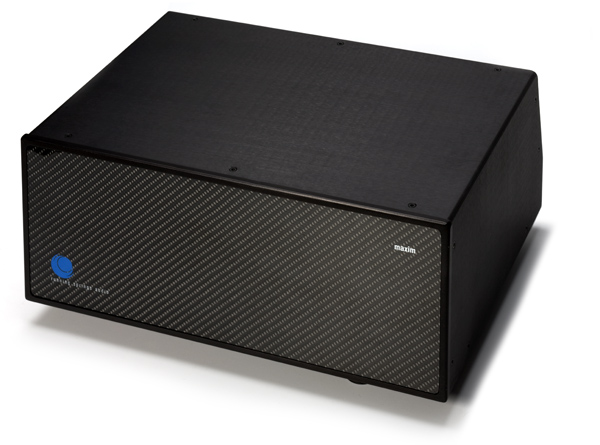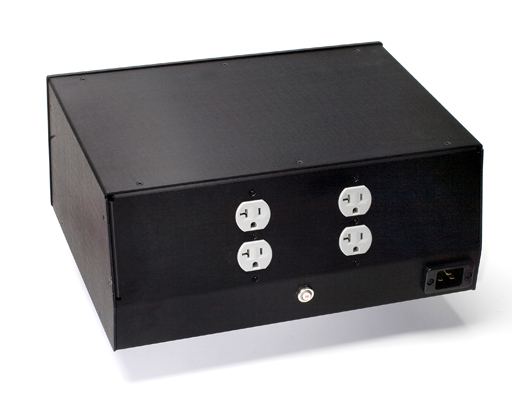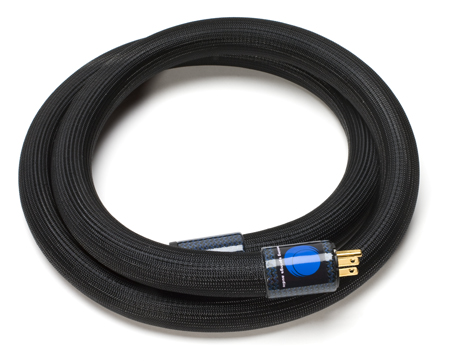Running Springs Maxim Power Line Conditioner Another level of clean
By Jeff Dorgay As a long time owner of Running Springs power conditioning products, I was very anxious to hear the effect of their newest power conditioner, the Maxim on my system. Unlike a number of other power product manufacturers at the recent Rocky Mountain Audio Fest that made outrageous claims for their power products (two of which have already been returned to their companies already), RSA designer Dan Babineau simply told me, “If you like your Dmitri, the Maxim uses the advancements I made going from the Haley/Jaco/Danielle series of our products to the Dmitri, but with additional filtering. It’s been optimized for high power/high current amplifiers.”
As a long time owner of Running Springs power conditioning products, I was very anxious to hear the effect of their newest power conditioner, the Maxim on my system. Unlike a number of other power product manufacturers at the recent Rocky Mountain Audio Fest that made outrageous claims for their power products (two of which have already been returned to their companies already), RSA designer Dan Babineau simply told me, “If you like your Dmitri, the Maxim uses the advancements I made going from the Haley/Jaco/Danielle series of our products to the Dmitri, but with additional filtering. It’s been optimized for high power/high current amplifiers.”
The new Maxim has an MSRP of $4,500 and the optional HZ power cord is another $1,495. The standard Mongoose power cord is $695.
In six years the RSA line conditioners have been the only ones I’ve been able to use in my system, that I could plug a power amplifier into without negative results; mainly the squashing of dynamics at modest to high volume. Every other power conditioner I’ve tried has fallen down when I’ve plugged my CJ Premier 350 or Burmester 911 mk.3 amplifier in. I’ve heard a couple do a respectable job at cleaning up the power (however, not as good as the RSA), but the minute you plug a big amplifier, the magic is gone.
In my reference system, most of my line level components (preamplifier, phono preamplifier, turntables and DAC) are plugged into the Dmitri on its own dedicated 20-amp circuit. My Naim CD555 has it’s own dedicated 20 amp line with a Running Springs Haley and the power amplifier on another 20 amp line with a Jaco.
How much further can it go?
I was particularly interested in torture testing the Maxim because I was working on a few high power amplifier reviews for our December issue. We’ve got the SimAudio Moon W-7 monoblocks at 500 watts per channel, the Burmester 911 mk. 3 at 350 per channel and the McIntosh MC1.2kw monoblocks at a staggering 1200 watts per channel as part of the lineup. And there’s a JL Audio Gotham hanging around with the ability to put out about 4000 watts in short bursts, so I couldn’t think of a better trial for the Maxim.
The Maxim took me by surprise because I was already content with the Jaco in my system, paired with the HZ power cord. Though I approached this with some skepticism, the result of swapping the Jaco for the Maxim was not subtle.
Immediately, I noticed a lower noise floor overall. This is instantly perceived as an increase in volume, because what your ear interprets as an increase in volume is actually the difference between loud and quiet. So if you want your system to sound louder, you can get more juice by making it quieter. Everything appears louder for the same given SPL.
Even more exiting was the increase in soundstage width and depth. With the Jaco in place, it seemed like the soundstage went about a foot beyond the speaker boundaries of the Gamut S-7’s that I used as the benchmark for all of my amplifier tests, but with the Maxim in place on the same music, the soundstage went about four feet beyond the speaker boundaries.

Keep in mind, with both power conditioners, the tonality of acoustic instruments stayed consistent and I could still wind out a big power amplifier without the leading or trailing transients getting shaved off, but in every case, the sound was bigger and slightly louder with the Maxim in the system. This effect also remained consistent, whether I was using the big Macs or my CJ LP70S, which is only 70 watts per channel.
The serious torture test was playing music at moderate to high levels with the big power amplifiers I had at my disposal. When those big blue meters on the MC1.2kw’s start swinging up past 600 watts per channel, you need current and that’s what the Maxim delivers. If you take a glance on just about any HiFi forum, you’ll see any number of posts where people throw their arms up and mention that their system always sounds more dynamic and lifelike when they just plug back in the wall. With the Maxim it’s just the opposite. Whether you are blasting Shostakovich or Snow Patrol, your system will exhibit a level of dynamics you didn’t think possible.

Is it real or is it Memorex?
Of course the human ear is fairly adaptive and it’s very easy to get used to the sound of one component over another after a while. After about a month of continuous listening with the Maxim, I plugged my Jaco back in the system to see if I really “needed” a Maxim. Everything shrunk down by a substantial amount and the system got slightly quieter, even at low volumes.
Keep in mind a power conditioner should not affect the tonality of your system at all. You shouldn’t get deeper bass or a more extended high end. Properly implemented, a good power line conditioner and associated power cords should merely deliver 100% of what your components are capable of delivering. No matter where you live, your power is moderately lousy to really lousy, because there are a lot of distortion components present in the line when power is generated. In short, things should get quieter and bigger. That is precisely what the Maxim does.
So, do I need one? You bet I do! If you have a modest system, it doesn’t make sense to buy a $6,000 power conditioner and power cord. Grab a Haley and enjoy the benefits. But if you’ve got a state of the art system and you’re already at 11, thinking there’s no where else to go, rest assured; there’s one more click on the dial with a Maxim.
The Running Springs Maxim Power Conditioner
MSRP: $4,500 (alone) HZ power cord, $1,495, Standard Mongoose power cord, $695
www.runningspringsaudio.com
Peripherals
Analog Source Spiral Groove SG-2 w/Triplanar arm and Lyra Skala cartridge
Digital Source Naim CD555
Preamplifier Conrad Johnson ACT2/series 2, Burmester 011
Power Amplifier Burmester 911 mk.3, CJ Premier 350, CJ LP70S, McIntosh MC1.2KW monoblocks, SimAudio Moon W-7 monoblocks
Speakers YG Acoustics Anat II Studio, Verity Audio Sarastro II, GamuT S-7
Interconnects Shunyata Aurora
Speaker Cables Shunyata Stratos SP
Power Running Springs Dmitri and Haley, RSA Mongoose power cords, Shunyata Python CX power cords


